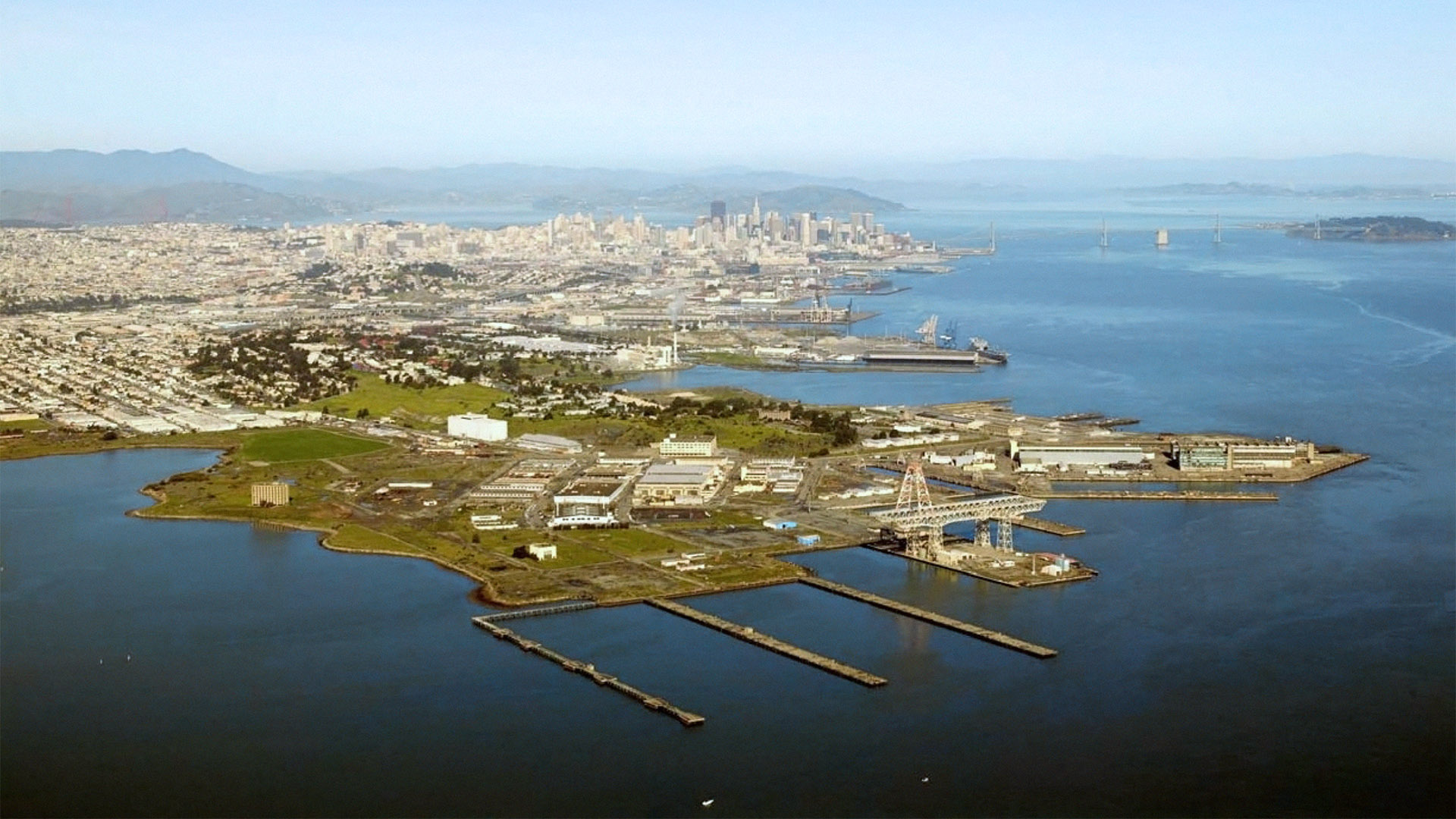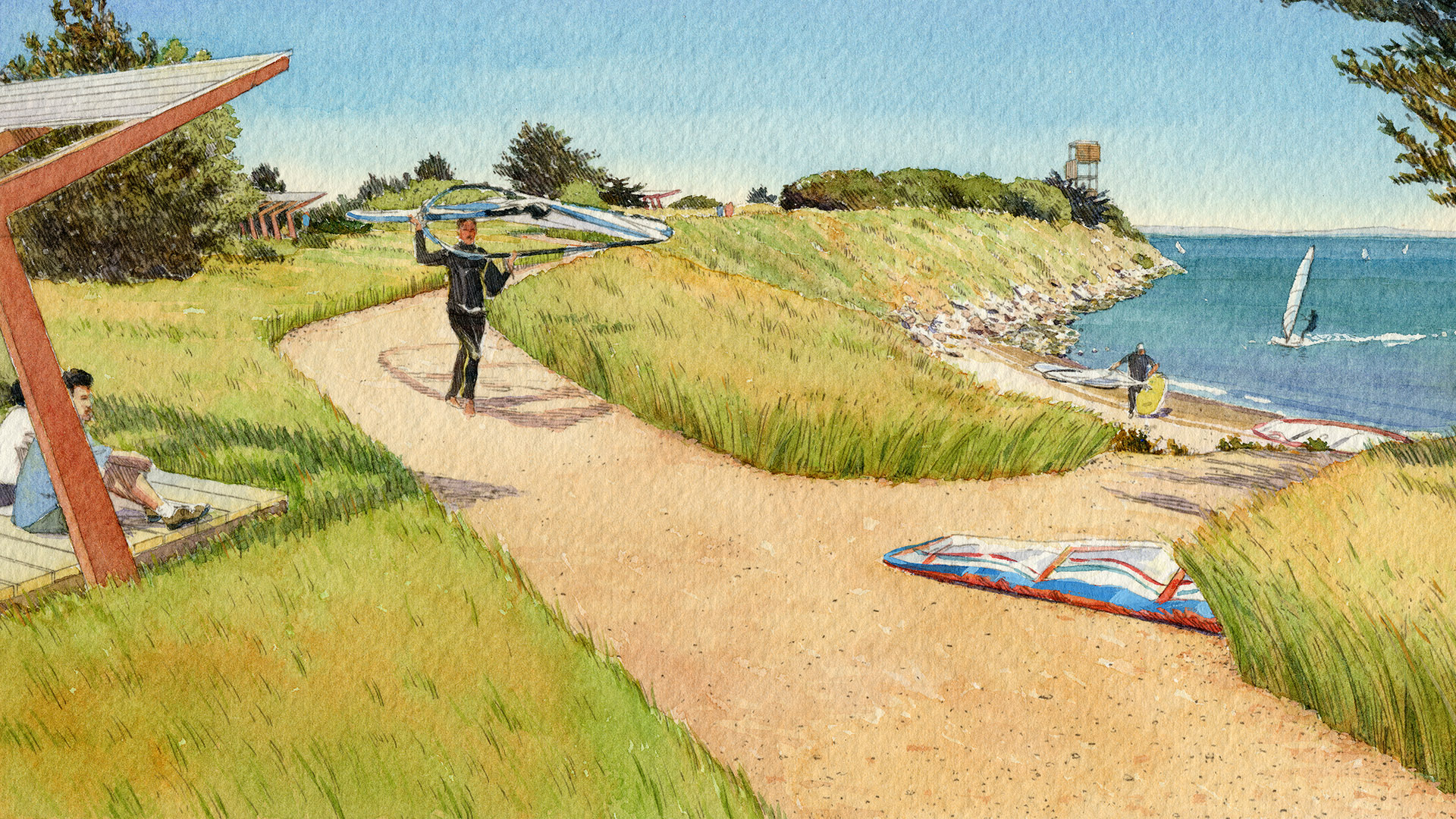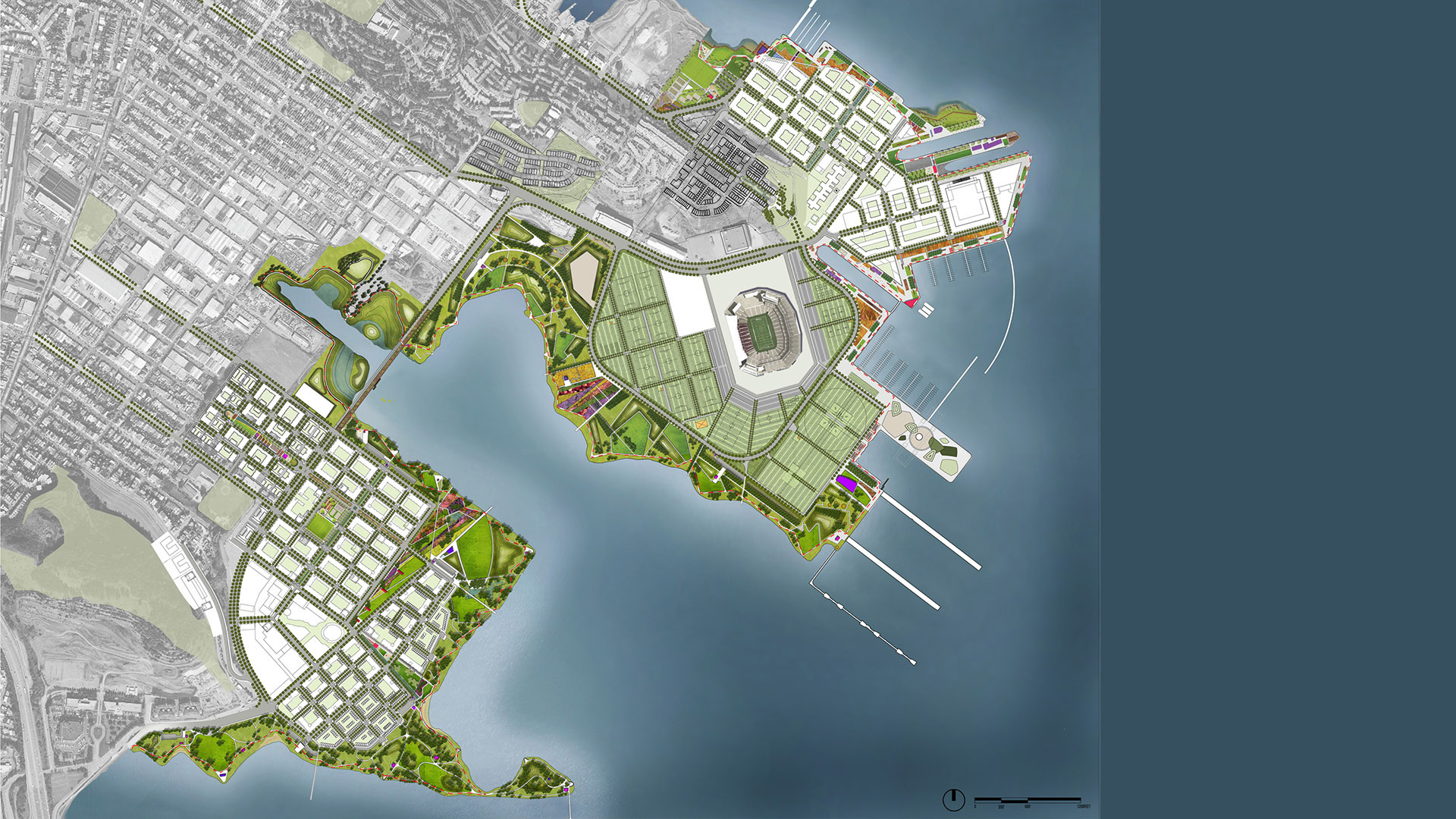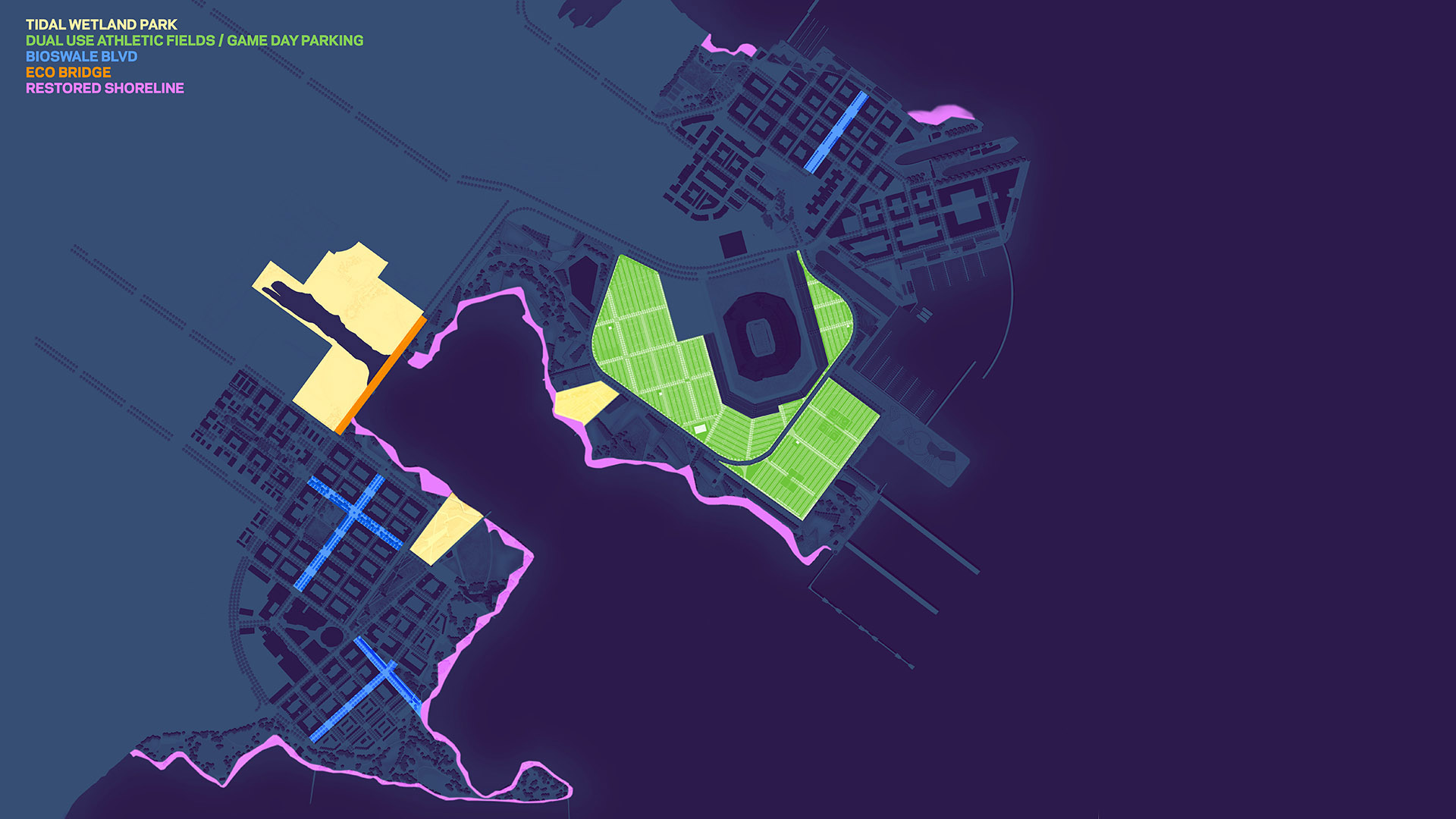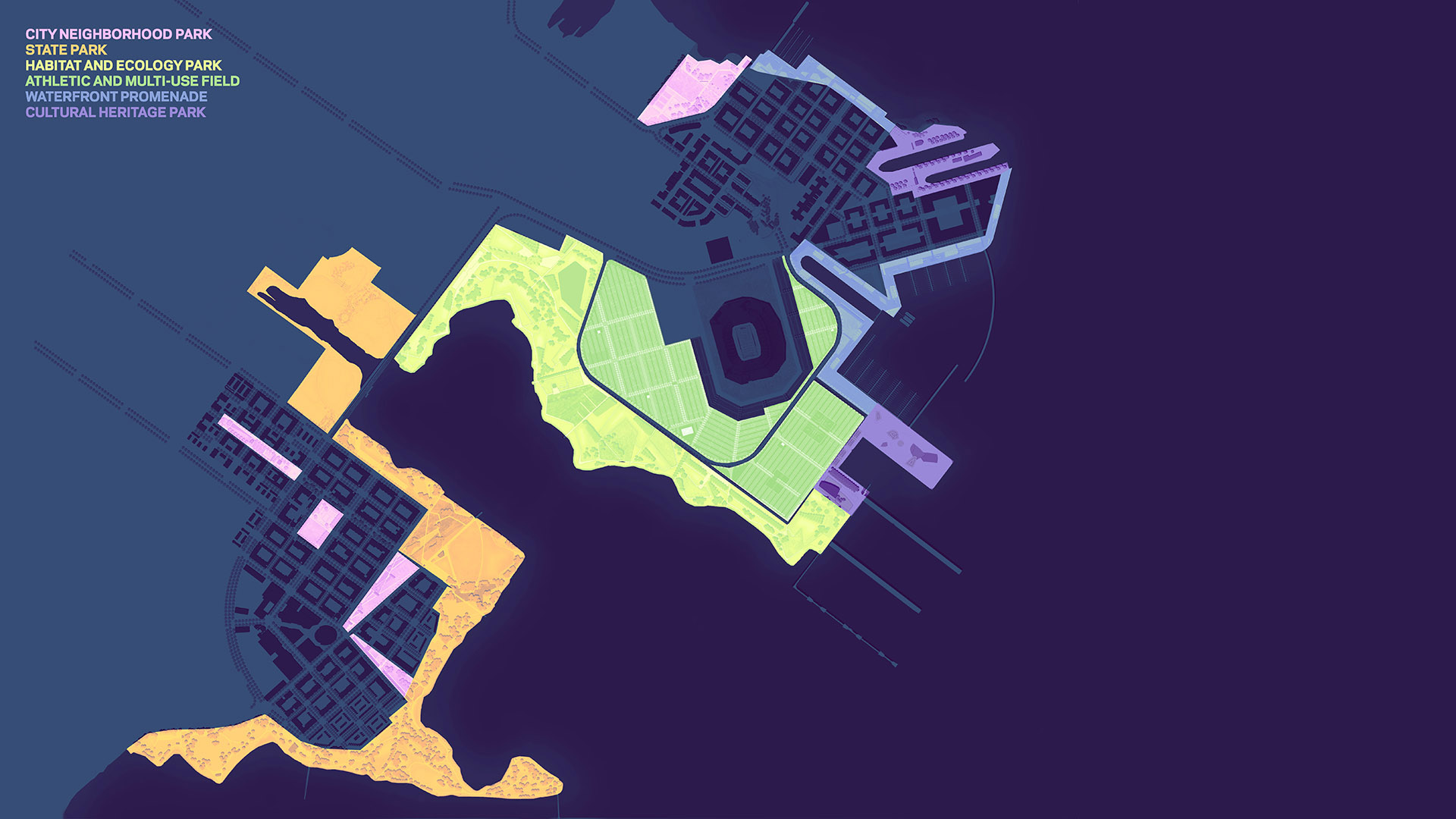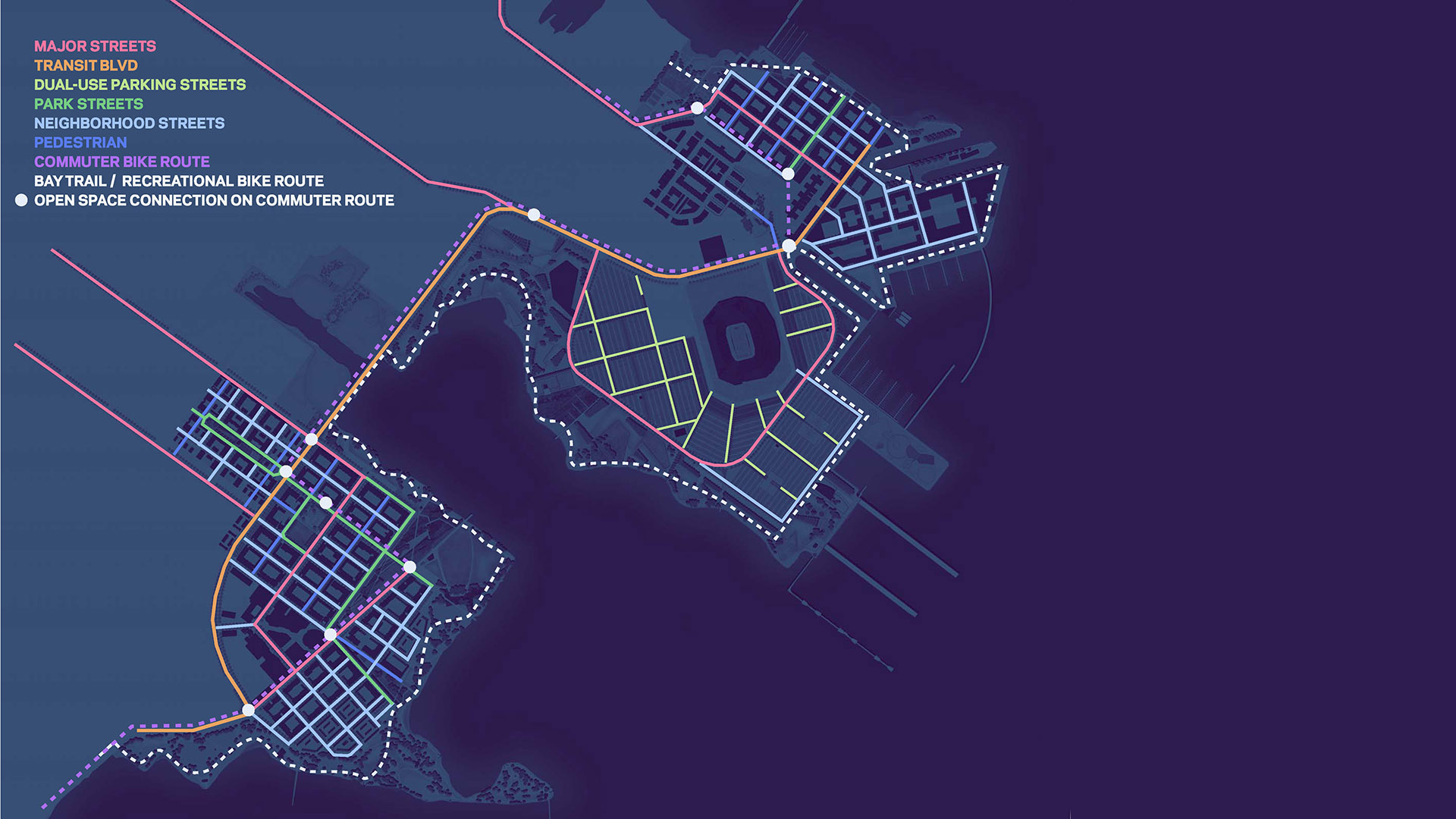Perched on the edge of San Francisco Bay, the Hunters Point Shipyard was an important naval manufacturing center for the WWI and WWII war efforts. Now abandoned, the shipyard, along with Candlestick Point, will be combined into a new mixed use residential, retail and light industry development — the largest in San Francisco since WWII. Thomas Balsley Associates collaborated with urban planners IBI Group in developing an innovative urban plan whose parks and open spaces exploit the site’s extraordinarily diverse waterfront and views as well as its rich maritime heritage.
The plan combines the proposed Forty-Niners football stadium within the new mixed-use community with a sustainable system of smart streets, bikeways and diverse parks, including California’s first urban state park, redesigned to function as the front lawn to San Francisco’s Bayview and Hunters Point Community.
A lively network of neighborhood parks, plazas, linear boulevard parks, roof deck recreation areas, and a continuous waterfront park trail and bikeway system will knit the spaces together and connect the upland community to its new shipyard neighbors and the extraordinary bay environment. The state park’s grassland and natural shoreline has been retooled into a landscape of the highest standards of environmental and social sustainability. The open space system of this new community has helped define its urban form and character as well as the quality of life and natural systems that we have come to expect of our built environment.
Rijskaya District Master Plan
Dubai Expo 2020
From October 2021 to April 2022, the City of Dubai will host the World Expo: a large-scale International Registered Exhibition that will bring nations together with universal themes and immersive experiences. It will comprise an entire new city, built on a 1,083-acre site between Dubai and Abu Dhabi. The Expo site is organized around a central plaza linked to ...
Gateway Mall Master Plan
The Gateway Mall runs 18 blocks through the center of downtown St. Louis, terminating at the famous Eero Saarinen Arch, and provides a green spine in which the downtown’s workers, residents, and visitors can relax and celebrate urban living.
The mall never fully lived up to the potential envisioned by the civic leaders at the time of its inception. Thom...
Riverside Park South
On the West Side of Manhattan, on the scenic Hudson River shoreline, Riverside Park South is a massive, multi-phase project of sweeping ambition and historic scope. Combining new greenspace, new infrastructure, and the renovation of landmark industrial buildings, the plan—originally devised by Thomas Balsley Associates in 1991—is an extension of Frederick Law ...


